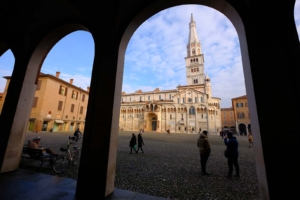San Petronio Basilica: history, art, and must-see treasures
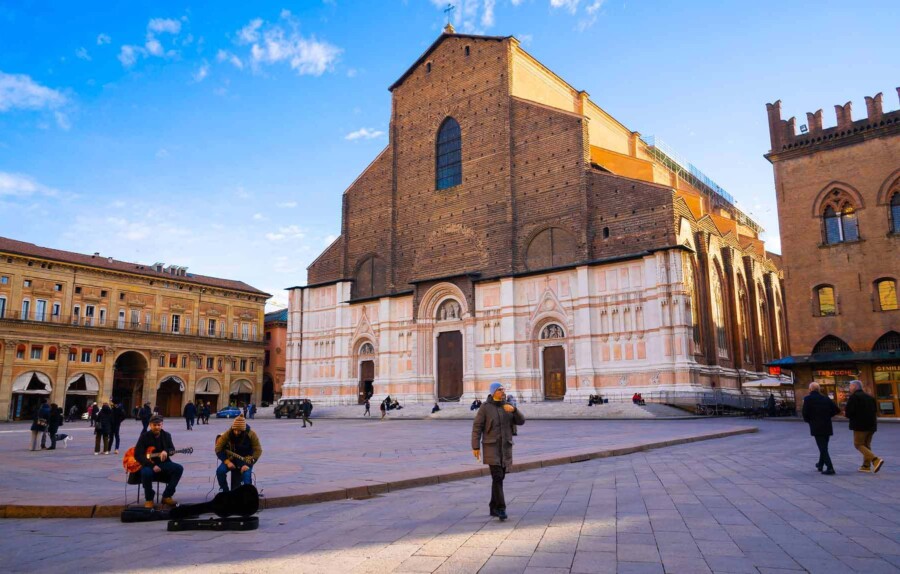
Nestled in the vibrant and historic Piazza Maggiore, the Basilica of San Petronio is a stunning symbol of Bologna's rich history, cultural legacy, and architectural brilliance.
As the largest and most important church in Bologna, this iconic landmark has captivated visitors for centuries.
With its fascinating history, unique architectural features, and spiritual significance, San Petronio Bologna is a must-see destination for anyone exploring this charming Italian city.
In this article, we’ll explore the basilica’s history, architectural marvels, and practical visitor information, while also highlighting its connection to other churches in Bologna.
A glimpse into history: the origins of San Petronio in Bologna
Who was San Petronio?
The basilica is named after Saint Petronius, the patron saint of Bologna, who served as the city's bishop during the 5th century.
Saint Petronius is credited with playing a pivotal role in shaping Bologna's religious and cultural identity, and his enduring legacy is celebrated through this awe-inspiring basilica.
The construction of the Basilica
Construction of the Basilica di San Petronio began in 1390 under the guidance of the renowned architect Antonio di Vincenzo.
The project was ambitious, with plans to create one of the largest and most magnificent churches in the world—bigger even than St. Peter's Basilica in Rome.
However, despite the grandeur of its design, the basilica remains incomplete to this day.
This fascinating unfinished state is a story in itself, revealing the challenges faced by the people of Bologna over the centuries.
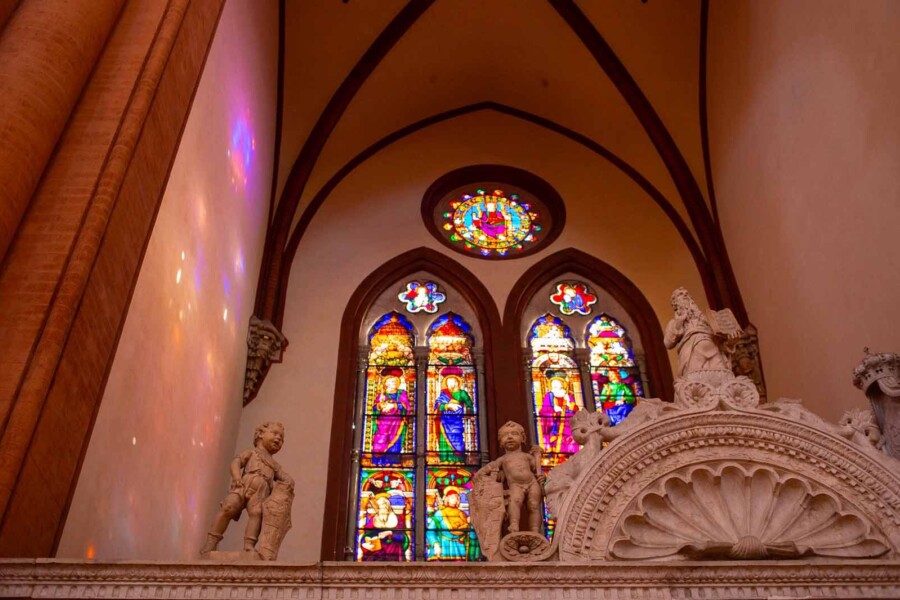
A chapel inside the church
Architectural highlights of San Petronio Basilica
The Façade: a striking contrast
One of the most iconic features of San Petronio Bologna is its unfinished façade.
The lower portion is adorned with intricate marble decorations, while the upper section remains bare, exposing the raw brick structure.
This contrast creates a unique visual dynamic that adds to the basilica's charm and intrigue.
Why is Basilica San Petronio unfinished?
The incomplete façade is not just an aesthetic feature—it reflects the history of the basilica itself.
Historians believe that financial constraints were the primary reason for this unfinished state.
Unlike other major cathedrals in Europe, San Petronio was funded almost entirely by the citizens of Bologna, as the Catholic Church did not provide significant contributions.
This connection to the people of Bologna gives the basilica a special place in the hearts of locals and serves as a testament to their determination and pride.
The interior: a journey through art and history
Step inside the basilica, and you’ll find a world of artistry and spirituality.
With its soaring vaulted ceilings and 22 chapels, the interior is nothing short of breathtaking.
Of particular interest is the Cappella Bolognini, which features Giovanni da Modena's famous frescoes. These vivid works depict the "Last Judgment," "Paradise," and "Hell."
Another highlight is the basilica’s vast nave, which feels both majestic and intimate, drawing visitors into its sacred atmosphere.
The meridian line of San Petronio
One of the most fascinating features of the basilica is the meridian line, a masterpiece of scientific precision created by Giovanni Domenico Cassini in 1655.
This 67-meter-long bronze line runs along the floor of the basilica and marks the sun’s position throughout the year.
It's a remarkable example of the intersection between science and faith.
The Musical heart: is there an organ in San Petronio?
San Petronio is home to two magnificent pipe organs, located on either side of the high altar.
These organs are among the oldest in Italy and are treasured by music lovers and historians alike.
The most famous of the two was built by Lorenzo di Giacomo da Prato between 1471 and 1475.
It remains a masterpiece of Renaissance craftsmanship and is still used for performances and religious ceremonies.
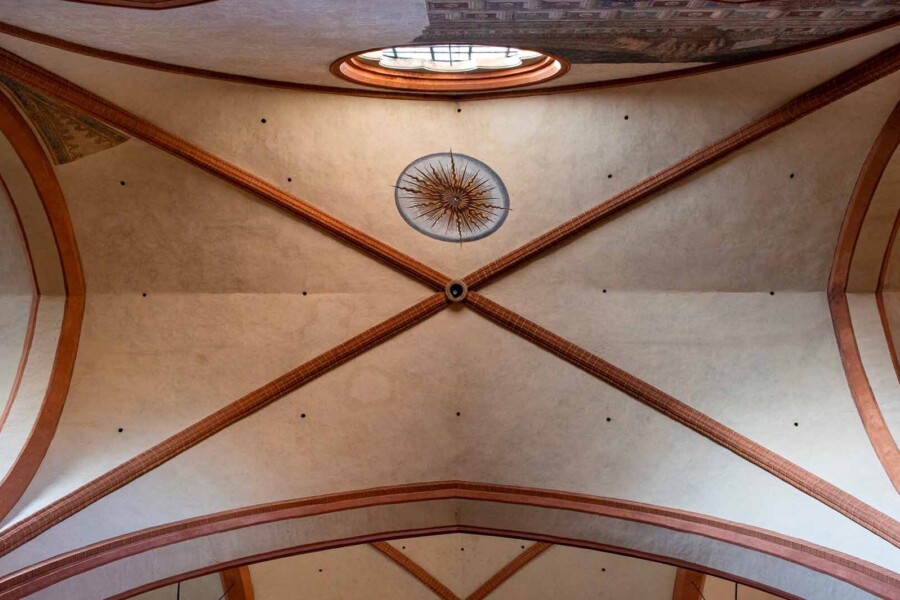
The opening for the light is used to mark the meridian line
Practical tips for visiting San Petronio Bologna
Opening hours
The basilica is open daily, but opening hours may vary depending on the season and religious events. Checking the official schedule before your visit is recommended.
What to wear
As a place of worship, modest attire is required. Visitors should cover their shoulders and knees out of respect for the sacred space.
How to get there
San Petronio is conveniently located in the heart of Bologna’s historic center, in Piazza Maggiore. It’s easily accessible on foot or via public transportation.
Is the Basilica di San Petronio free?
Yes, admission to the Basilica di San Petronio is free for everyone. However, certain sections, such as the Cappella Bolognini, may require a small fee.
Groups of 15 or more are advised to make reservations in advance.
The schedule: what time is Mass at San Petronio Basilica?
For those wishing to attend Mass, here is the schedule:
- Weekdays: 11 a.m. in the Chapel of Santissimo Sacramento.
- Saturdays and days before public holidays: 11 a.m. and 5 p.m.
- Public holidays: 9 a.m., 10 a.m., and 11:30 a.m.
Exploring the surroundings: churches in Bologna
While the Basilica of San Petronio is the crown jewel of Bologna’s religious landmarks, the city is home to many other breathtaking churches in Bologna that are well worth a visit:
- Santo Stefano: Known as the "Seven Churches," this complex is a mystical and architectural gem. Its interconnected courtyards and chapels offer a glimpse into Bologna’s medieval past.
- San Domenico: Renowned for its stunning sculptures by Michelangelo and its serene cloisters, this church is a haven of art and tranquility.
- Santa Maria della Vita: a few steps from San Petronio, this church keeps one of the Bologna'hidden gems: the Compianto by Niccolò dell'Arca
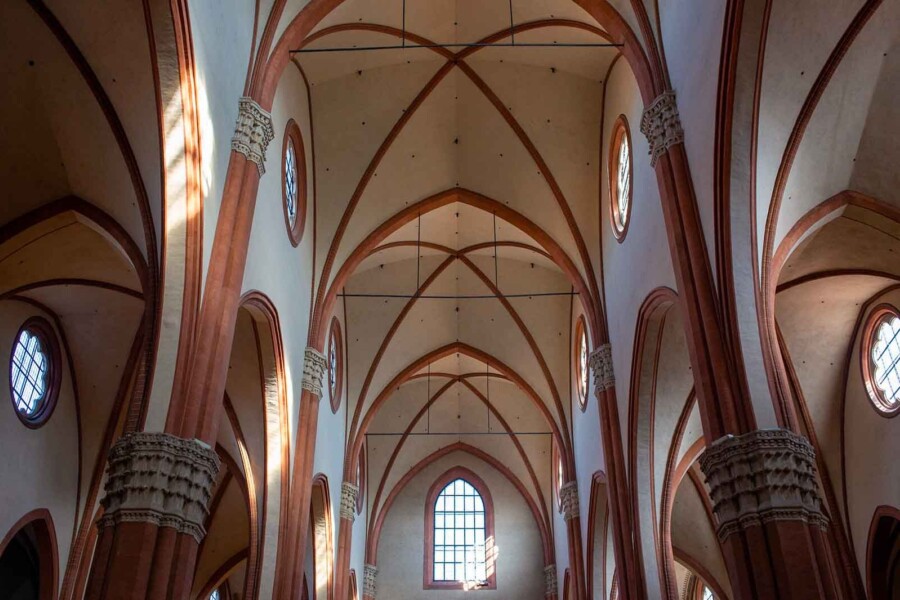
The inside of the church
Why you should visit San Petronio in Bologna
The Basilica di San Petronio is more than just a place of worship—it’s a living testament to Bologna’s history, artistry, and resilience.
Whether you’re admiring its unfinished façade, exploring its intricate interior, or standing beneath its majestic pipe organs, the basilica offers an unforgettable experience.
As part of your journey, take the time to explore other historic churches in Bologna, savor the city’s renowned cuisine, and immerse yourself in the vibrant atmosphere of the markets.
[photos and credits foliamagazine.it and Alessio Vallero]

